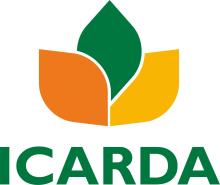Resource information
Soil organic carbon (SOC) is the major determinant of soil quality, and it greatly influences global carbon cycling and climate change. This paper is a synthesis of the literature on soil carbon research in India, including soil organic and inorganic carbon stocks, in the form of thematic maps for national and regional level planning at bioclimatic systems and agroecological subregion levels in the country. The potential role of soils in mitigating the global warming effects of atmospheric CO 2 is discussed using results from Indian tropical soils. The database on Indian soils collected through natural resource inventory and soil carbon and crop modeling approaches show that sequestration of atmospheric CO 2 occurs as pedogenic carbonates and plays role as a soil modifier in enhancing soil organic carbon in the drier parts of the country through management interventions. Clearly, soils can act as a potential medium for sequestering atmospheric CO 2 to mitigate the global warming effect. Reviews T he role of soil as an important natural resource for seques-tering and storing atmospheric CO 2 for mitigating climate change effects has been addressed by many researchers (Schlesinger, 1982; Victoria et al., 2008; Wang et al., 2010; Batjes, 2011; Powlson et al., 2011; Banwart et al., 2014; Bhattacharyya et al., 2014; van Noordwijk et al., 2014). There has been great interest in mitigating the climate change due to global warming by sequestering and storing carbon in soil and its influence on soil quality and agricultural productivity (Powlson et al., 2011; Banwart et al., 2014; Bhattacharyya et al., 2014). Soils provide important ecosystem services at both local and global levels and are the mainstay for crop production. Soils act both as sources and sinks for carbon (Bhattacharyya et al., 2008). With the challenge to feed a global population of 9 billion people by mid-century and beyond, it is essential to maintain the health and productivity of agricultural and range land soils (van Noordwijk et al., 2014). One way is to maintain, and wherever necessary, increase the soil organic carbon, especially in tropical soils. The term carbon sequestration has been used to describe the process of increasing organic carbon stores with appropriate land management interventions. The process could be natural and/or human-induced to harness CO 2 from the atmosphere and to store it in ocean or terrestrial environments (i.e., in vegetation, soils, and sediments) and in geologic formations (USGS, 2008; Powlson et al., 2011). The reduction of atmospheric CO 2 by sequestration has been reported to have a great potential for shifting greenhouse gases (GHG) emissions to mitigate climate change, and soil, as an ideal reservoir, can store organic carbon to a great extent (Wang et al., 2010). Interestingly, carbon sequestration has always been referred to in literature with respect to organic carbon, despite the fact that both organic and inorganic forms of carbon are involved in C sequestration. The aspects related to the formation of pedogenic CaCO 3 (PC), as an example of inorganic C sequestration, have a direct bearing to soil health (Bhattacharyya et al, 2004, 2008), especially in low quality, infertile soils in the semiarid tropical (SAT) environments. It is well known that vegetation and soils are the major sinks of atmospheric CO 2 . Carbon stocks are not only critical for the soil to perform its productivity and environmental functions, but they also play an important role in the global C cycle. Soil C sequestration can improve soil quality and reduce the contribution of agriculture to CO 2 emissions
Processes Determining the Sequestration and Maintenance of Carbon in Soils: A Synthesis of Research from Tropical India (PDF Download Available). Available from: https://www.researchgate.net/publication/263932761_Processes_Determining... [accessed May 9, 2016].



